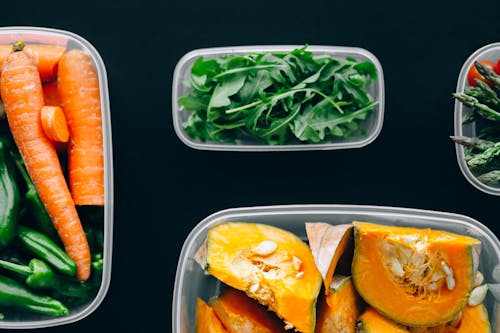Introduction
The phrase “from farm to table” has become a mantra in the culinary world, emphasizing the journey of food from its origins to the plates of consumers. While this phrase conjures images of fresh produce, there’s a deeper significance to it, especially concerning the nutritional quality of the foods we consume. In this article, we’ll explore the various factors that affect the nutritional quality of fresh foods, from farming practices to storage and cooking methods.
Farming Methods and Nutrient Content
The foundation of nutritional quality in fresh foods lies in the methods used to grow them. Organic farming, for instance, eschews synthetic pesticides and fertilizers in favor of natural alternatives. Studies have shown that organic produce tends to have higher levels of certain nutrients, such as antioxidants and certain vitamins. This can be attributed to healthier soil, which encourages the production of phytochemicals.
Similarly, the use of sustainable farming practices, such as crop rotation and polyculture, can enhance soil health and biodiversity, leading to more nutritious crops. These methods promote a balanced ecosystem where plants receive a wide array of nutrients from the soil, resulting in healthier and more nutrient-dense produce.
Harvesting and Post-Harvest Handling
Once crops are ready for harvest, how they are handled can significantly impact their nutritional content. Freshly harvested fruits and vegetables contain the highest levels of vitamins and minerals, which can decline over time. Proper handling, including careful picking and immediate cooling, helps to preserve these nutrients.
Moreover, transportation and storage conditions play a crucial role. Long transportation times and improper storage can lead to nutrient loss. For example, exposure to light and air can degrade certain vitamins, while temperature fluctuations can accelerate spoilage. To mitigate these effects, efforts to reduce the time between harvest and consumption, such as buying locally or growing your own produce, can help preserve nutritional quality.
Processing and Packaging
Fresh foods often undergo minimal processing compared to their packaged counterparts, which can help retain their nutritional value. However, some processing methods, such as canning and freezing, can actually preserve nutrients by locking them in. For instance, frozen fruits and vegetables are typically picked at peak ripeness and quickly frozen, preserving their vitamins and minerals.
On the other hand, certain processing techniques, such as high-heat cooking or prolonged exposure to light, can lead to nutrient loss. For example, boiling vegetables can leach water-soluble vitamins like vitamin C into the cooking water. Therefore, choosing gentle cooking methods like steaming or roasting can help preserve nutrients.
Read More: The Science of Nutrition: Exploring the Link Between Diet and Health
Seasonality and Variety
Eating with the seasons not only supports local agriculture but also ensures a diverse and nutrient-rich diet. Seasonal produce is often harvested at peak ripeness, meaning it’s more flavorful and nutritious. Additionally, consuming a variety of fruits and vegetables ensures a broader spectrum of nutrients.
Different colored fruits and vegetables contain different phytochemicals, which have various health benefits. For example, orange fruits and vegetables like carrots and sweet potatoes are rich in beta-carotene, while leafy greens like spinach and kale are packed with folate and vitamins K and C. By incorporating a rainbow of produce into your diet, you can maximize your intake of essential nutrients.
Environmental Factors and Nutrient Content
Environmental factors, such as soil quality and climate, also influence the nutritional quality of fresh foods. Soil depletion, caused by intensive farming practices, can lead to a decline in nutrient levels in crops. Additionally, climate change can affect the nutritional content of foods by altering growing conditions.
For example, rising temperatures can reduce the concentration of certain nutrients in crops, while increased carbon dioxide levels can lead to a decrease in protein content. Furthermore, extreme weather events, such as droughts or floods, can damage crops and compromise their nutritional value. Addressing these environmental challenges through sustainable agriculture and mitigation efforts is crucial for maintaining the nutritional integrity of our food supply.
Conclusion
From farm to table, every step in the journey of fresh foods impacts their nutritional quality. By understanding the factors that influence this quality, consumers can make informed choices to maximize the nutritional benefits of their diets. Supporting sustainable and regenerative farming practices, choosing seasonal and locally grown produce, and adopting gentle cooking methods are all ways to ensure that the food on our plates is not only delicious but also nourishing. By prioritizing nutritional quality, we can reap the health benefits of fresh foods while also promoting a more sustainable food system.



